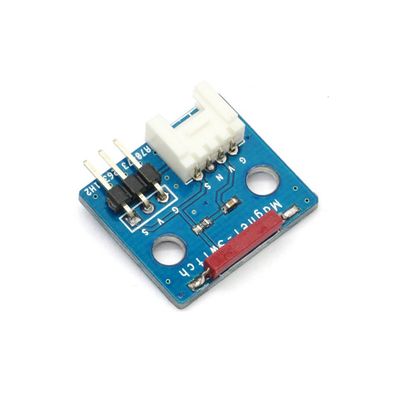Difference between revisions of "Magnetic Sensor/Switch Brick"
(→Overview) |
(→Features) |
||
| Line 5: | Line 5: | ||
==Features== | ==Features== | ||
| + | 1. Plug and play, easy to use. Compatible with the mainstream 2.54 interfaces and 4-Pin Grove interfaces in the market. | ||
| + | http://imall.iteadstudio.com/media/wysiwyg/Products/ElectronicBrick/IM120710016_2.jpg | ||
| + | |||
| + | 2. With use of M4 standard fixed holes, compatible with M4-standard kits such as Lego and Makeblock. | ||
| + | http://imall.iteadstudio.com/media/wysiwyg/Products/ElectronicBrick/IM120710016_3.jpg | ||
| + | |||
| + | 3. Sensor is located on the edge of PCB to facilitate detection. | ||
| + | http://imall.iteadstudio.com/media/wysiwyg/Products/ElectronicBrick/IM120710016_4.jpg | ||
==Specifications== | ==Specifications== | ||
Revision as of 03:22, 27 May 2014
Contents
Overview
Electronic brick of magnetic switch can be connected to digital I/O port to obtain the current status of magnetic switch by reading the current digital signal. Generally speaking, output is high level; when the sensor encounters magnetic objects (such as magnet), output is low level.
Features
1. Plug and play, easy to use. Compatible with the mainstream 2.54 interfaces and 4-Pin Grove interfaces in the market.

2. With use of M4 standard fixed holes, compatible with M4-standard kits such as Lego and Makeblock.

3. Sensor is located on the edge of PCB to facilitate detection.

 Notice
Notice